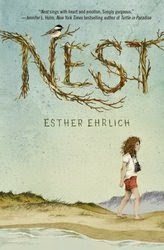We hear news stories every day of people leaving pets, babies
and toddlers in the back seats of cars, and we can’t imagine how someone can be
so irresponsible. In the riveting new book Little Mercies, by Heather
Gudenkauf, veteran social worker Ellen Moore, a woman who has dealt with
countless incidences of child abuse and neglect, accidentally leaves her daughter
in the back of her car on the hottest day of the summer in Cedar City, Iowa, while
rushing to rescue two girls from domestic violence. It can happen to any of us.
While the drama unfolds in the house where a man is holding
a young mother and two girls hostage, Ellen is oblivious to the spectacle
behind her until she hears the crash of breaking glass from her car. When the limp body of her daughter Avery is
pulled from the van, Ellen Moore’s life is shattered along with her the glass.
Meanwhile, ten-year-old Jenny Briard has come alone to Cedar
City in search of a long lost grandmother. Jenny, a victim of child abuse
herself at the hands of her stepfather, had been living with her hapless
father, but after he is arrested, she has nowhere to go, and she bristles at
going back to a foster home.
Ellen’s mother Maudene tries to help Jenny, but they are both
inadvertently thrown into the turmoil surrounding Ellen’s mistake. Told in alternating chapters between Ellen and
Jenny’s stories, their lives converge in a surprising ways.
Gudenhauf’s novel is well paced, suspenseful and well
written. Occasionally the narrative lags with a few typos and areas of repetition,
but these may have been ironed out between the review copies and final print. The believable characters and their conflicts
will engage readers and lead to interesting discussions in a book club. Fans of
Lisa Scottoline’s Look Again and Save Me or Paula Daly’s Just
What Kind of Mother Are You? will enjoy Little Mercies.
Includes a Reader’s Guide and author interview. (Available now $15.95, Harlequin MIRA)


